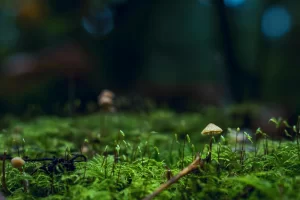Incorporating Ferns and Moss into Your Natural Garden Design
Creating a natural garden design can be a rewarding endeavor, especially when you incorporate elements that blend seamlessly with the environment. Two such elements that can significantly enhance the aesthetic appeal of your garden are ferns and moss. These plants not only add a touch of greenery but also create a serene, woodland-like atmosphere that can transform your garden into a tranquil haven.
Ferns are a fantastic choice for any natural garden design. They come in a variety of shapes and sizes, from the delicate maidenhair fern to the robust ostrich fern. Their lush, feathery fronds can fill in the gaps between larger plants, providing a beautiful backdrop and adding depth to your garden. Ferns are also incredibly versatile. They can thrive in a range of conditions, from full shade to partial sunlight, and can tolerate a variety of soil types. This makes them an excellent choice for those tricky areas of your garden where other plants may struggle to grow.
Incorporating ferns into your garden design is relatively straightforward. They can be planted in clusters to create a dense, forest-like feel, or used as border plants along pathways or around garden features. Ferns also work well in combination with other shade-loving plants, such as hostas and astilbes, creating a layered, textured look that is visually appealing.
On the other hand, moss is a unique and often overlooked element in garden design. It provides a soft, velvety carpet that can cover the ground or drape over rocks and logs, creating a magical, fairy-tale-like atmosphere. Moss is also incredibly resilient. It can survive in areas where other plants can’t, such as in deep shade or on poor, rocky soil. This makes it an excellent choice for those hard-to-plant areas of your garden.
Incorporating moss into your garden design requires a bit more planning, but the results are well worth the effort. Moss can be used to create a lush, green lawn alternative that requires little maintenance. It

The Role of Ferns and Moss in Creating a Sustainable Garden Landscape
Creating a sustainable garden landscape is a wonderful way to contribute to the health of our planet while also creating a beautiful and serene outdoor space. One of the most effective ways to achieve this is by incorporating ferns and moss into your garden design. These two types of plants not only add a touch of natural beauty to your garden, but they also play a significant role in creating a sustainable and eco-friendly landscape.
Ferns are an excellent choice for any garden due to their versatility and hardiness. They can thrive in a variety of conditions, from full sun to deep shade, and they require very little maintenance once established. This makes them a great option for those who want a low-maintenance garden that still looks lush and vibrant. Moreover, ferns are excellent at preventing soil erosion, a common problem in many gardens. Their intricate root systems help to hold the soil together, preventing it from being washed away by rain or wind. This not only helps to maintain the health of your garden, but it also contributes to the overall sustainability of your landscape.
Transitioning to moss, this humble plant is often overlooked in garden design, but it has a lot to offer. Moss is incredibly resilient and can grow in places where other plants struggle, such as on rocks or in shady, damp areas. This makes it a fantastic option for those tricky spots in your garden where nothing else seems to grow. Additionally, moss is a champion when it comes to water conservation. Unlike most plants, moss doesn’t have roots that draw water from the soil. Instead, it absorbs water directly from rain or dew, making it an excellent choice for gardens in areas with limited rainfall.
But the benefits of using ferns and moss in your garden design don’t stop at their practical advantages. These plants also add a unique aesthetic appeal to your garden. Ferns, with their delicate fronds and varying shades of green, can create a beautiful, textured backdrop for other plants. They can also be used to create a tropical or woodland
